#unique product packaging solutions
Explore tagged Tumblr posts
Text
Premium Packaging Design Agency for Unforgettable Brand Experiences
Searching for a top-tier packaging design agency? Octopus & Jam is your go-to partner, specializing in creating impactful and memorable product packaging that elevates your brand. Our expert team designs unique packaging experiences that capture attention, reflect your brand's essence, and leave a lasting impression on your customers.
#Custom packaging design agency#creative product packaging solutions#packaging design experts#innovative packaging design services#brand-focused packaging design#tailored product packaging agency#packaging design and branding#unique product packaging solutions#premium packaging design agency#creative packaging design company.
0 notes
Text
"For generations, the people of Erakor village in the Pacific nation of Vanuatu would pass their time swimming in the local lagoon. Ken Andrew, a local chief, remembers diving in its depths when he was a child, chasing the fish that spawned in its turquoise waters.
That was decades ago. Now 52, Andrew has noticed a more pernicious entity invading the lagoon: plastic.
“The plastic would form a small island inside the lagoon, it was so thick,” Andrew says. “We used fishing nets to pull some of the trash out, but we didn’t know how to get rid of it all. We couldn’t conquer it, there was just too much.”
While residents were struggling to empty Vanuatu’s waters of plastic, the country’s politicians were considering another solution. Could they stop the waste directly at the source?
Small island nations like Vanuatu face a series of unique challenges when it comes to plastic pollution. Many rely on imported goods to sustain their populations, and receive tonnes of plastic packaging every day as a result. Ocean currents pull plastic waste from around the world into Pacific waters, which eventually end up on the shores of its islands.
Few Pacific island governments have adequate recycling or waste management facilities on their narrow strips of land, so rubbish is often burned or left to wash up in rivers or lagoons like the one in Erakor. It is estimated that Pacific countries generate 1kg of waste per person a day, 40% higher than the global average.
In an attempt to drastically limit the amount of waste generated in Vanuatu, in 2018 the government became one of the first in the world to outlaw the sale and distribution of certain single-use plastics – including a world-first ban on plastic straws.
In the six years since, the results have been impressive. Thin, plastic shopping bags are hardly ever seen, with most shoppers carrying reusable bags at their local market or grocery store. At festivals and outdoor events, food is more often served wrapped in banana leaves instead of polystyrene takeaway boxes. Now-banned items used to make up 35% of Vanuatu’s waste, but now make up less than 2%.

Pictured: Pandanus leaves are now used instead of plastic bags at markets, but supply of the crop can be affected by storms and cyclones, vendors say.
The plastic islands that once choked Erakor lagoon are also shrinking.
“Since they started the ban, you can see the lagoon has become cleaner,” says Andrew.
It is a massive victory for a small island nation made up of just over 300,000 people across 83 islands...
In 2020, a second phase of the policy added seven more items to the list of forbidden plastics, which now covers cutlery, single-use plates and artificial flowers.
“It’s quite difficult to enforce because of the very low capacity of the department of environment,” Regenvanu says. “So we try to work with the municipal authorities and customs and other people as well.”
Compromises had to be made, though. Fishers are still allowed to use plastic to wrap and transport their produce. Plastic bottles are also permitted, even though they often litter coastlines and rivers.
Secondary industries have now developed to provide sustainable alternatives to the banned items. On the island of Pentecost, communities have started replacing plastic planter pots with biodegradable ones made from native pandanus leaves. Mama’s Laef, a social enterprise that began selling fabric sanitary napkins before the ban, has since expanded its range to reusable nappies and bags.
“We came up with these ideas to reduce the amount of plastic in Vanuatu,” says the owner Jack Kalsrap. “We’re a small island state, so we know that pollution can really overwhelm us more than in other, bigger countries.” ...
Willy Sylverio, a coordinator of the Erakor Bridge Youth Association, is trying to find ways to recycle the litter his team regularly dredges up from the lagoon.
“The majority of the plastic waste now comes from noodle packaging or rice packaging, or biscuit packets,” Sylverio says. He hopes the plastic ban will one day include all packaging that covers imported goods. “Banning all plastic is a great idea, because it blocks the main road through which our environment is polluted.”
The Vanuatu government plans to expand the plastic ban to include disposable nappies, and says it will also introduce a plastic bottle deposit scheme this year to help recycle the remaining plastic waste in the country."
-via The Guardian, June 20, 2024
#vanuatu#pacific islands#pacific islander#pacific ocean#pollution#plastic pollution#plastic waste#recycling#sustainability#waste#environment#lagoon#good news#hope
353 notes
·
View notes
Text
I'm just in a rambley mood. Feel free to ignore my random stream of thoughts.
As much as it's true that any business needs money I still think that trying to copy the business models of the big leagues is inherently a mistake. You can't copy something that took over 100 years to build.
The thing I liked about the PWHL's season one model was that it was all about making a nicely packaged product and making it readily accessible to everyone. And as much as the league's single-owner system has inherent problems, it actually does give the league a unique ability to to be able to build slowly and be nimbler in implementing changes.
At the end of the day I just don't think their model can be one of getting the established big hockey fans to watch more women's sports. It should be one of going after new fans. Going after people who didn't know they liked hockey or thought they didn't because they didn't like the NHL. To try building a new culture and market instead of trying to co-opt an existing one.
And you just can't entice large numbers of people into giving something a try when it's locked behind multiple paywalls or requires resorting to piracy.
Its accessibility is the only reason I ever became a fan. I remember hearing about the league forming and I thought to myself, "Hey, that's cool. Too bad it'll be locked behind whatever sports service I don't have like every other sport." And then promptly forgot about it for awhile.
It wasn't until the league had already been going for a bit that I heard that games were free to watch on Youtube and that's what got me hooked. And what's better that's how I got other people to check it out too!
In the ramp up to Season 2 I just keep seeing signs of them stretching and trying to rush some things. And I really hope they can recognize that part of their success in Season 1 was inherently because they were doing things differently. For every bum on the Youtube chat complaining and saying they would never bother watching a sport where the teams don't have logos and how much better the NHL is, there were 5 fans who were excited by how different everything was.
I know they probably thought those innovations were failures brought on by a need to get creative in order to launch so quickly. But I saw them as features! If they can just look past the wet dream of wanting to be the next NHL in only a couple of years, I think they'll see that they already stumbled on some really interesting ideas.
I don't really have any solutions to the problems they face. And I don't think anyone's ever found the secret to creating a new league and make it extremely profitable. But I can't help but to feel that the secret lies in doing things differently.
So many leagues have fallen because they tried to do the same things as before. And I really hope the PWHL finds the legs to create something lasting.
9 notes
·
View notes
Text
GRANDPACK CELEBRATES OVER A DECADE OF EXCELLENCE IN PHARMACEUTICAL PACKAGING SOLUTIONS
Grandpack is a leading supplier of complete solutions for pharmaceutical packaging.
Grandpack, a leading pharmaceutical machinery manufacturer & supplier from China, proudly marks over ten years of delivering comprehensive technical solutions for pharmaceutical packaging. With a steadfast commitment to quality and innovation, the company has become a trusted partner for industries worldwide.
Leveraging Computer Science to Increase Efficiency and Improve Safety
The integration of computer science into pharmaceutical packaging machinery is subtly transforming the industry, enhancing operational efficiencies, and setting new standards for production safety. Grandpack has equipped itself with smarter technologies by adopting the high standards of Industry 4.0 and IoT. Machine learning and data analytics enable Grandpack to monitor packaging lines in real time and implement predictive maintenance strategies, reducing equipment downtime by approximately 25% and improving overall production efficiency and safety.
Product Line-up of Grandpack: A Brief Overview
Grandpack is a leading company that provides effective solutions in the pharmaceutical packaging sector and offers innovative solutions that enhance productivity, accuracy, and compliance with the requirements. The company specializes in providing high-quality machines for tube filling, vial filling, and solid preparation granulation, all this with a view to automation and precision as the key goals.
The Tube Filling Machines from Grand Pack Machine cater to a wide range of industries, including pharmaceuticals, cosmetics, and food. With models offering semi-automatic and fully automatic operations, these machines ensure high-speed, precise filling and sealing, significantly reducing manual labor and production inefficiencies.
For vial filling, Grandpack provides advanced aseptic filling solutions designed for pharmaceuticals, cosmetics, and food industries. These machines ensure hygienic, high-speed liquid filling, with integrated capping and labeling options to streamline the packaging process while maintaining strict quality standards.
The Solid Preparation Granulation Line offers a fully automated solution for pharmaceutical manufacturing, minimizing human error and maximizing efficiency. With a strong focus on GMP compliance and contamination control, this system is ideal for large-scale tablet and capsule production, ensuring consistency and regulatory adherence.
With its precision-engineered packaging solutions, Grandpack continues to empower businesses with cutting-edge technology that enhances production efficiency and product integrity.
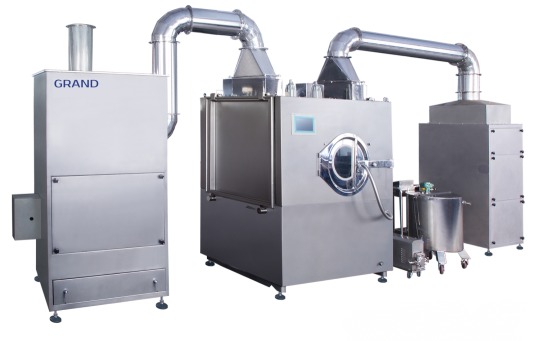
Key Advantages of Choosing Grandpack for Pharmaceutical Packaging
Proven Experience: More than ten years in pharmaceutical packaging.
Compliance with GMP & ISO 9001:2015: Guaranteeing top-tier quality standards.
Tailored Solutions: personalized options designed to fulfill unique production requirements.
Worldwide Impact: Endorsed by over 3,000 clients in more than 100 countries.
Unmatched Precision & Efficiency: Our machines are engineered for exceptional accuracy and rapid performance.
3 notes
·
View notes
Text
my thoughts on tears of the kingdom (on a non-zelda blog)
so here's the thing, I love Zelda.
I've been playing the series since I was a child, practically raised on it by my oldest brother whom I have a 10 year age gap with. One of my most cherished childhood memories was when he got me Wind Waker on the Gamecube as a birthday present, I would have been around 7 years old and he would have been 17. Zelda was and still is a huge part of our lives.
So skip to today, we both got Tears of the Kingdom on launch day. We're both busy adults now who live far away from each other so we've just been updating each other on our progress and sending memes.
But I've got a lot of thoughts about the game that I really want to get out, as someone who's been with this series for two decades. My brother started with games like A Link to the Past and that was practically my first exposure to the series as well as it's what I would watch him play, alongside Ocarina of Time and Majora's Mask.
There will be mild SPOILERS ahead concerning the gameplay and story, so don't click the jump unless you've already played the game or don't mind getting spoiled!!! LONG POST AHEAD!
So I guess let's just get on with this, yeah? I'm not gonna separate it into "good" vs. "bad" because I find everything in this game has good shit that comes packaged with bad shit. It's a lot of pros with cons attached, so trying to separate it cleanly between "good" and "bad" isn't going to be a very productive approach.
I've seen TOTK described as "DLC" for Breath of the Wild (derogatory) while on the opposite end, Breath of the Wild has been described as the "tech demo" for Tears of the Kingdom (positive). Frankly, I can see where both sides are coming from. There are lots of elements in TOTK that feel like they could have been in BOTW, whereas other elements can confidently stand on their own separate from that of BOTW.
One such example is the new Sheikah Slate, aka the Purah Pad. While there are some features from BOTW that are surely missed (Cryonis, sigh) others have been replaced with far more beneficial features such as Ultrahand and Fuse (the bread and butter of this game) and Recall, which - controversial I'm sure - is far more functional and has way more opportunities to be useful than BOTW's Stasis ability. The Ultrahand ability alone is a massive upgrade, allowing you to go wild with the game's physics engine. The shrine puzzles are a lot stronger in this respect, having more to work with by combining the Ultrahand ability with thematic Zonai devices, often times taking you through a gauntlet of rooms with similar puzzle-solving, each more challenging than the last. There's nothing more satisfying - and doubly frustrating - than seeing the solution to a shrine you've already spent three days on and going "Wait, I could have done that???" It just goes to show that the inventive creativity necessary to solving these puzzles from BOTW has carried over twofold into TOTK.
However, I feel like these new features are less rewarding as the game goes on. While mechanics like Cryonis and remote bombs made exploring feel unique and accessible in BOTW, the lack of these features in TOTK have made exploring feel far more difficult than it should be. What used to be an easy - albeit slow - endeavor such as crossing a river by creating ice block bridges with Cryonis has now turned into an exercise in futility and physics knowledge. You can't just cross a river, you have to build a boat out of whatever resources you can find or use to cross said river. And while this is a very inventive feature that has really stretched the creative bones of its players, it's a feature that becomes draining. Sometimes you really do just want to cross a river without having to build a spaceship or a ferry. Sometimes you do just want to be able to get up to the top of a cliff without needing to build a hot air balloon. Even with the Autobuild ability, these new mechanics do really start to feel grating after a while, especially for someone such as myself who struggles with executive dysfunction and doesn't want to build yet another boat or flying car just to travel 10 feet.
Regarding that last statement, I think the inclusion of the Ascend ability helps to combat tiresome climbing, but it never seems to be an option quite as often as it could be. I've seen people praise the ability stating that it helps them avoid climbing cliffs entirely, but more often than not, I've found the ability is only usable for a third of a rocky mountain where it happens to have a platform jutting out that's close enough for Ascend to reach - with the rest of it encouraging you to just climb up naturally, or, you guessed it, use the Ultrahand ability to build your way up. The Ascend ability - like Statis from the game's predecessor - is very specific and not accessible enough in the world's design to make it actually helpful. You know exactly when and where you're supposed to use it, and trying to use it outside of those instances won't get you anywhere. Of course, I'm not going to judge this ability too hard because it's still more than what we had in BOTW, but I find its application isn't quite as useful as it could be.
And boy, there are a lot of things in TOTK that don't have as strong an application as they could. I think there's no truer place this could be said than the expansion of the game's map, through The Sky and The Depths.
Disappointingly enough, just like in Skyward Sword, which suffered for having a strong premise but weak delivery with an open sky that had nothing to do in it, Tears of the Kingdom has barely fleshed out its Sky and Depths areas enough to make them feel memorable or worth going out of your way to explore. Once you've explored 10% of either, you've experienced all of it. While the Sky and the Depths each have their own dungeon, neither of them really feel justified enough to explain why they had to be there. The Depths don't add anything to the nature of the Fire Temple - by the time you're finished with it, you'll forget you're even in the Depths - and while the Water Temple does have the addition of lowered gravity up in the Sky, no other islands have this, so it feels like a random addition in the way of a gimmick that doesn't actually play much of a role in the dungeon's puzzle-solving.
As for the Depths, I do have to say that the game introduced it in the best way possible. No one spoke of them, outside of an NPC in Lookout Landing sending you on a quest to find a nearby one, but they still don't describe to you what you're about to come upon. It wasn't in any of the gameplay trailers. You see a big hole in the ground with gloom coming out of it, you know you can jump down into it, but it's not until you actually do that you realize you're diving down into the belly of a completely different beast. Link keeps falling and you're realizing how dark it's getting and hoping you can pull out your paraglider in time to hit a ground that you realize you cannot see - when the music shifts and the horns blare and your stomach sinks realizing just how dark and vast this place is.
The Depths are what I truly fell in love with in this game. I was struck with that primal fear in my gut that I hadn't felt since playing Majora's Mask as a child. For the first time in forever, I felt like the smaller species, like a speck of dust in unfamiliar territory. It was a welcome feature for a game that - if you had preceded it with Breath of the Wild - needed something to shake things up.
But, unfortunately, that initial thrill wears off eventually. The Depths become just that - a vast expanse with nothing in it. Aside from the odd treasure chest containing a piece of gear, the Bargainer's Statues, and a couple main story quests that take you down there, the Depths have nothing. Mapping them out is a feat in and of itself, even more daunting than mapping out the above ground with its tens of lightroots, but once you get at least 50% through the map, you realize that there's really nothing else to it. In fact, the map of the Depths exactly mirrors that of the map above you, with even less to do due to its lack of notable landmarks (outside of a central mining area, the Korok Grove, and the aforementioned Fire Temple), lack of biome distinction between areas (aside from the Eldin area created specifically for the Fire Temple), and lack of shrines. Once you figure that out, mapping out the rest of it is an unfortunately boring cakewalk.
I think both of these new inclusions in the game are unfortunately half-baked, making TOTK in and of itself feel like a tech demo for something that could have been more expanded upon. That said, it's a tall order, to ask for the game to run an in-depth open world map on three separate levels - the hardware itself already often struggles to load the Depths if you dive down into them too quickly, as the fall itself is its own cleverly hidden loading screen - but it's a shame to see it essentially repeat the mistakes of Skyward Sword, and it's where I feel that "this could have been DLC" complaint comes from.
There are features that feel like mild downgrades from BOTW, such as its new Fuse ability to fuse together weapons. While it seems inventive at first, the amount of inventory being carried over from BOTW makes the gameplay grind to a halt as you scroll through your pop-up inventory list to find the right thing to attach to your arrows or weapons, often times mid combat. While you can sort your menu into different sections - such as 'most used' and 'most powerful' - such a thing could have been fixed by allowing the player to create their own custom lists of items or just reducing what is and isn't capable of being fused. It feels like an unnecessary extra step thrown in to BOTW's weapon degradation mechanic just to make it feel more unique.
Moving on, this is where I want to talk about the game's story. Like the last game, it asks Link to piece together the memories of companions already gone. The story woven within these memories is a tragic one, with an emotional depth to it that I found myself relating far more to than in BOTW, which asked us to sympathize with characters who we had never met and were already gone. On the flipside, TOTK manages to tell a similar story with a lot more emotional depth, now using Princess Zelda as the tether between the present and the past, in a way that I feel works much better than in BOTW. Its climactic twist felt like something you would find in Spirited Away, and its one that I felt was appropriate for the game's setting and themes. That said, I still do not find myself compelled by this game's version of the Champions, similarly to what I experienced in BOTW. At the very least, it brings back cast members from BOTW for us to connect through, such as Purah and Lady Impa, who I was happy to see return.
And then there are the Sages.
I have a lot to say about the Sages.
The Sages have to be the single worst inclusion of this game. And that's not to say they ruin the game, but in a game full of wonderful moments and amazing gameplay, they definitely feel like a tarnishing C- on an otherwise perfect report card. Just like in Breath of the Wild, the game's main story gameplay is the weakest part of Tears of the Kingdom. While BOTW had Link conquering the out-of-control Divine Beasts, TOTK asks Link to unearth ancient temples and awaken the spirits of sages long gone for their powers to be reborn through their descendants, three of which happen to be the successors of BOTW's Champions: Riju, Sidon, and Yunobo. While the development team and press surrounding this game called these temples "traditional dungeons", they are fundamentally the exact same as the Divine Beasts, following the same 4-beat structure in which you have to activate 4 'locks' (themed around the dungeon's setting) to unlock the dungeon's boss. I found these dungeons were often even easier than the Divine Beasts of BOTW, essentially asking Link to solve four separate shrine puzzles to get to a boss that follows a simple mechanic loop. While the bosses are far less repetitive than the Blights of BOTW, they are also far less intimidating or punishing, barely requiring any extensive thought to figure out how to overcome them. The hardest boss in the game - the Gibdo Queen - ironically had one of the easiest dungeons out of the four.
But here's the thing - Tears of the Kingdom is built the exact same way as Breath of the Wild, giving the player freedom to choose the order in which they complete dungeons, if they even choose to complete them at all... but unlike past Zelda games which offered this freedom, TOTK fails in how it delivers these dungeons and the narrative surrounding them. I was miffed upon completing my second dungeon - the Fire Temple - and realizing that the cutscenes it presented were the exact same as the first one I did - the Wind Temple - and sure enough, that same cutscene played out from its respective sage for the following Water Temple and Lightning Temple. They are all the same. While one could argue this was their way of navigating around the freedom of choice - to allow the player to experience neutral cutscenes that won't be out of order or out of context - the memories themselves are also out of order and out of context so having the dungeon cutscenes be varied should be a feature, not a bug to patch out. Currently, with its repetitive cutscenes and what you gain from completing a dungeon, it makes them far less enjoyable to do, knowing you're essentially just doing one big shrine with a giant enemy (one you can find in the Depths for farming, which makes them feel far less unique or imposing) with the reward of a heart in the end.
Of course, I'm forgetting to mention the other reward you get after completing a dungeon. Sage abilities. The biggest downgrade from BOTW by far.
In BOTW, upon completing a Divine Beast, you would be granted with an ability from its respective Champion, typically a passive one - meaning, if you had the ability enabled, it would activate on its own or you could trigger it a specific way, such as Mipha's Grace which would automatically revive you once in between cooldowns (basically a fairy you didn't have to catch) and, the fan favorite, Revali's Gale, which could be triggered by holding down the jump button and would grant you so much more ease of exploring.
Tears of the Kingdom, instead, asks "What if we made all of the Champions their own characters who could run around you, get in your way, and offer even less useful abilities?"
The present Sages - Yunobo, Tulin, Riju, Sidon, and Mineru - are akin to a teenager taking way more dogs than they could handle out for a walk. They are five nuisances who will run away from you when you need them, and run around you when you're just trying to pick up an item, causing you to accidentally trigger their abilities which are simply mapped to the A button. Too many times I've had them trigger a fight with enemies I was trying to avoid, blow away loot I was trying to grab, or blow up explosives that I wasn't aiming at, killing me outright. While they can be turned off, I feel like it could have been far easier to implement them in a way that wasn't so distracting and obtrusive - currently, the way they're implemented basically demands you keep them turned off until you absolutely need them. Considering a map of the Switch controller buttons comes up with the A button highlighted, it begs the question, why even have the other three buttons visible onscreen if they can never be mapped? Why not make use of different buttons for different companions? Or make them passive abilities similar to that of the Champions from BOTW? Overall, their inclusion feels clunky and not well thought out, and their abilities aren't near beneficial or useful enough to justify this much headache. At most, Yunobo is helpful in blowing up rock walls when you don't have Bomb Flowers, and Tulin is helpful in gusting you towards a landing spot while gliding through the sky, but that's about where their usefulness ends. Unlike in BOTW, the efforts required to gain their abilities barely feels like a reward, but more of an obligatory chore, making the dungeons feel even less rewarding to do.
With all that said, unlike in BOTW, Tears of the Kingdom never becomes a smoother experience to explore. The effort you put into completing the dungeons and gaining better weapons and gear never feels rewarded with anything substantial or worth working for. The Sage abilities are a burden and give very little benefit to exploring or combat the same way BOTW's Champion abilities did, the dungeons themselves aren't experiences worth writing home about, and the story is so milquetoast and repetitive that once you beat one dungeon, you've experienced all of them.
That said, while I've done a lot of complaining, there are a lot of things about the game I'm enjoying compared to Breath of the Wild. One such thing are the sidequests - there are a LOT more of them in this game, and many of them feel far more engaging and rewarding than Breath of the Wild. Accessing the Great Fairies requires an actual sequence of quests now, in which you bring a travelling band back together, and from that point forward, you can always hear them playing their music at the stables scattered throughout Hyrule. Hateno has its own questline that rewards you with what's possibly Link's greatest piece of fashion ever, Cece's Hat. Even the small quests feel more rewarding to do because TOTK feels far busier than BOTW did. There are far more NPC's, and the world itself just feels more lively; I wouldn't expect any less in the sequel to BOTW which experienced a cataclysmic event that wiped out the population of the kingdom. It's nice to see the difference in how the towns operate in TOTK because you can feel it through its sidequests. There are still Yiga Clan members in disguise on the surface, but it's far less now compared to BOTW where you couldn't talk to an NPC on the road without getting shanked.
Of course, it wouldn't be a BOTW sequel without one of its most daunting sidequests of all - the Korok Seed quest. This time, there are 1000 Korok Seeds to find, with new puzzles to find them, most notably the escort quests, which require you to build whatever godforsaken Roman-era torture device you need to build to get wandering Koroks from Point A to Point B.
That said, the unfortunate news I have to break to you after finally seeing someone complete the quest themselves - all that awaits you in the end, once again, is "Hestu's Gift" which I have to say, isn't as quite as funny the second time around. While in BOTW it felt like a funny nudge at completionists, in the vein of "Haha, look at you! You worked so hard to get all those seeds and all that awaited you was a pile of poop! It's all in good fun! The real prize was the adventuring you did along the way!" but having that be the end prize again in TOTK where we're exploring regions we've already explored before feels far more passive-aggressive, like it's making fun of you for really doing what the devs expected you to do a second time, with a snarky, "Seriously? You're that stupid? You really thought there'd be something new this time?" Especially considering the Koroks exclusively populate the Sky and the Surface - giving players even less incentive to want to explore the Depths, further robbing this new expansive area of less identity. Ironic that the Depths, an area so big that it requires its own hidden loading screen, would end up having even less to do than the Sky itself, which barely covers any surface area in the game's overall map by comparison. It's a damn shame the devs couldn't be bothered to think of something to reward the player with for all their work. At least in BOTW it could be said the reward was the exploration, as so much of BOTW's map goes untouched by its main story and its world was brand new to us back then - it's not brand new now, though, and the areas that are new are going completely unused.
I realize this review is getting quite long, but I want to close it with one final point - Breath of the Wild and Tears of the Kingdom's place in the Zelda franchise.
There's a startling lack of one specific thing that makes a Zelda game truly Zelda, despite the dev's best efforts to return its old school elements such as traditional "dungeons" and its nods to previous games in the title through its referential gear sets implemented right into the game (vs. exclusively as DLC in BOTW) - and that's the Triforce.
It's said that a true Zelda game can't contain its core triad of characters - Link, Zelda, and Ganondorf - without containing the Triforce in the center of all of it, and yet Tears of the Kingdom did this, and frankly, it just proves that point.
Anyone who knows me knows I'm not good at singling out a 'favorite'. Whenever people ask me what my favorite Zelda game is, my mind races through all the titles I played as a child - Ocarina of Time, Majora's Mask, Wind Waker, Twilight Princess - and yet I rarely think of Breath of the Wild and likely won't think of Tears of the Kingdom either. It's not for lack of trying or consideration, I do think both Breath of the Wild and Tears of the Kingdom are respectable games, both inclusive and exclusive of one another, but rarely does my mind go to them because to me, they don't feel like true Zelda games. And I didn't realize why until I recalled that the last game we had featuring Link, Zelda, Ganondorf, and the Triforce as core setpieces... was Twilight Princess. A game that will be turning seventeen this year, and will likely be twenty by the time the next mainline Zelda game releases. And one could argue even Twilight Princess doesn't count because Ganondorf was a last second addition - if we want to be really obtuse about it, technically we haven't gotten a game featuring Link, Zelda and Ganondorf as our main characters since Wind Waker, a game that turned twenty years old last year!
I felt its absence especially in Tears of the Kingdom, seeing Ganondorf manipulate his way into stealing the sigh 'secret stones' (I'm sorry but that name is so fucking cringe, please just call them "sacred stones" or "mystic stones" or SOMETHING more interesting than "secret stones", we don't even get any sort of lore or hinting towards where they came from, they're just magical McGuffin's with a stupid name) but not once mention his true motivations prior to finding out about the stone's existence. There was no emotional motivation such as what can be seen in The Wind Waker through a Ganondorf scorned by his lost culture and the kingdom that he just wanted to see wiped out to make things even; or Ocarina of Time Ganondorf who sought to access the Sacred Realm and take the Triforce and all its power for himself. Shit, there wasn't even a mention of Demise, the massive plot-twister of Skyward Sword, which Nintendo attempted to make the ultimate explanation as to why the games and their stories experience the same warring cycle from generation to generation; an explanation that could have worked, if they had actually followed up on it through BOTW and TOTK - yet, despite having the opportunity to do so, seem to just be whistling around the issue, pretending like it's not there. Despite having an Ouroboros in its title art, this cycle of death and rebirth is noticeably gone in Tears of the Kingdom.
Look, I get it. The developers have already stated that they're intent on moving forward with its open world format in future Zelda games. It's making them a lot of money. It's refreshing. It's bringing new fans into the franchise. And it's bridging the gap between generations by re-introducing classic exploration elements of retro Zelda while trying to also balance the narrative elements that modern post-N64 Zelda fans have come to expect.
But when you tear apart all the original components of a franchise, of its themes, its characters, its stories, and replace them with new components only slightly reminiscent of the old... can that franchise really be called the same thing anymore? When people ask me what my favorite Zelda game is, I don't think of Breath of the Wild or Tears of the Kingdom because to me, they're just not Zelda games. They're just what they are - Breath of the Wild and Tears of the Kingdom. Nintendo had a huge opportunity to make Tears of the Kingdom into a game that could tie its predecessors together with a neat little bow, and yet it still took the half-baked way out, layering it instead with its own story that doesn't even really work or take advantage of the foundation it's standing upon. They're their own games, and that's okay, but I can't help but feel that the further we go down this road, the less it'll encompass what made Zelda what it was to begin with.
And yeah, I'm sure I'm just being a typical 'old Zelda fan' who's complaining about the exact same thing that people complained about in games like Wind Waker and Twilight Princess. But when your Zelda game featuring Link, Zelda, and Ganondorf does not mention a word of the Triforce, I think both retro and modern Zelda fans can agree to even a slight extent that you can't have Legend of Zelda without the Triforce. That would be like having Super Mario without Power Stars (or some equivalent of them) or Kirby without its existential nihilism or Sonic without Chaos Emeralds. Sure, you can have games in their franchises without their respective trademarks, but do it enough times and people will start to notice something's seriously off. I think we can all agree that while Twilight Princess and Wind Waker may be, aesthetically and thematically, completely different games, you can't deny they're Zelda games at their core because they still have that signature cast fighting over those pesky golden Doritos.
In this respect, Tears of the Kingdom feels like it's suffering from the same problem Star Wars is suffering from - it exists to spite the titles that came before it, but knows it won't succeed without the fans of those titles so it makes as many cheeky references to those titles as it can without paying actual respect to them. It even opens the game with references to things that retro gamers will recognize - Rauru, Ganondorf recognizing Link's name, etc. - but then all those elements are later revealed to be unique to TOTK, such as Rauru being the first King of a Hyrule that's exclusive to the BOTW timeline, or Ganondorf only recognizing Link's name because a time-travelling Zelda told him his name, not because it's the same Ganondorf of titles' past. It feels incredibly disappointing to have all this setup and so little payoff especially for these games that are claiming to be the 'next step' for the franchise. It feels less like a 'next step' and more like a complete reboot for a different audience. These games are not reminiscent of what pulled me and my brother into the franchise way back in the day.
But I dunno, maybe it's a weird hill to die on. I don't want to be one of those "not my Zelda" puritans but when the games don't even contain elements of what made them distinctly Zelda back in the day, down to its trademark features, it makes me wonder what exactly where the series is headed.
Anyways. That was a lot. I do want to make it clear that I am enjoying this game, very much so, but like many games that top the charts with solid 10/10's on release, I feel like there are definitely still places the game could have been further refined, despite the extra year it took to polish it. From the inconvenient gameplay halters like the inventory fusing, to the obtrusive butchering of the Sage abilities, so many things could have been tightened up just a bit more to further improve on what Breath of the Wild started, rather than trade out what BOTW did for weaker alternatives. It's a game of gimmicks, rather than one of substance. While Breath of the Wild lacked substance itself in many regards, it at least had the benefit of being a brand new format, with a vast world one could spend hours exploring - with that same world returning in Tears of the Kingdom, with very little done to flesh out the attempts to expand it, it very much feels like it's simply riding off the coattails of Breath of the Wild, and in that regard, I can agree to an extent with the "DLC" arguments, while also agreeing that there are things in TOTK that very much improve on BOTW and make it look like a tech demo.
One thing I will recommend in the end to those of you who might be reading this - do not play Breath of the Wild right before Tears of the Kingdom. Whether it's your first time playing BOTW or you're wanting to revisit it, don't do it. I was fortunate enough that my last time playing BOTW was several months ago, but I've seen loads of people not enjoying TOTK because they replayed BOTW in the days before its release, and let me tell you, this game is far less of a unique or fun experience if you play BOTW right before playing TOTK due to the world design. If you play them one after the other, you'll burn yourself out on it and not get to appreciate what TOTK adds to BOTW's world as much as if you had gone in partially or mostly blind.
And that's all I'm gonna say on that. Tears of the Kingdom gets a 8.5/10 from me. I am excited to see where the franchise goes next in terms of its open world concept, I hope Nintendo can at least stray away from this version of Hyrule so we can get something new like we did in BOTW. Tears of the Kingdom was by no means a negative experience for me, and I'm planning on getting back into it tonight and tackling more of its sidequests, which are probably one of my favorite parts of the game. I could very well be way too hard on it, so this opinion could change over time as I spend more time in its world, but these are my general experiences that have come up in the back of my mind over the past couple weeks since its release.
Thanks for reading!
#tears of the kingdom#tears of the kingdom review#long post#tears of the kingdom criticism#legend of zelda#TOTK#zelda#breath of the wild#BOTW#review#game review
75 notes
·
View notes
Text
Top Strategies for Men in Sales to Close Deals Faster

In the fast-paced world of sales, time is money. The quicker you can close deals, the more revenue you generate and the more you solidify your reputation as a top performer. But closing deals isn’t just about using pressure tactics or flashy presentations—it's about strategy, understanding your client, and delivering real value. Here are the top strategies for men in sales to close deals faster and more effectively.
1. Master the Art of Listening
One of the biggest mistakes salesmen make is talking too much. In the excitement of pitching, it's easy to forget that listening is more persuasive than speaking. When you listen:
You Understand Pain Points: Customers buy solutions, not products. By truly understanding their pain points, you can position your offer as the remedy.
You Build Trust: Clients feel valued when they're heard, which builds trust and credibility.
You Tailor Your Pitch: By listening, you can customize your presentation to directly address their needs, increasing your chances of closing the deal.
Tip: Practice active listening by paraphrasing what your client says and asking clarifying questions. This shows you’re engaged and understand their needs.
2. Build Authentic Relationships
Sales are built on trust and relationships. The days of pushy sales tactics are long gone. To close deals faster:
Be Genuine: People can sense insincerity. Be authentic in your interactions.
Focus on Long-term Value: Prioritize the client's success over a quick sale. This builds loyalty and encourages referrals.
Stay Connected: Even if a deal doesn’t close immediately, keep in touch. A simple follow-up or check-in email keeps you on their radar.
Tip: Use social media platforms like LinkedIn to engage with potential clients and keep relationships warm by sharing relevant content or congratulating them on career milestones.
3. Know Your Product Inside Out
Nothing kills a sale faster than uncertainty. To instill confidence and close deals swiftly:
Master the Details: Know every feature, benefit, and limitation of your product.
Understand the Competition: Be aware of competing products and clearly articulate your unique selling proposition.
Demonstrate Value: Explain how your product solves the client's problem better than others.
Tip: Use real-life case studies and testimonials to showcase your product’s effectiveness. Clients trust peer experiences more than sales pitches.
4. Create a Sense of Urgency
People procrastinate. A sense of urgency can speed up the decision-making process. But this requires finesse to avoid sounding pushy:
Limited-Time Offers: Discounts or bonuses that expire soon encourage quick decisions.
Scarcity Principle: If your product has limited availability, let the client know.
Highlight Opportunity Costs: Explain the risks or losses of delaying the purchase.
Tip: Use urgency ethically. Never fabricate scarcity or false deadlines, as it can damage trust if discovered.
5. Ask for the Sale Directly
Many sales fall through because the salesman never asked for the sale. Closing requires confidence and assertiveness:
Use Closing Techniques: Try the “assumptive close” (“When would you like to get started?”) or the “alternative choice close” (“Would you prefer the premium or basic package?”).
Handle Objections Gracefully: Expect objections and prepare logical, benefit-focused responses.
Create a Clear Call to Action: Whether it’s signing a contract, scheduling a demo, or making a payment, make the next steps clear and straightforward.
Tip: Practice different closing techniques with peers or mentors to find what feels most natural for you.
6. Leverage Social Proof and Testimonials
People trust peers and testimonials more than sales pitches. Use social proof to your advantage by:
Sharing Case Studies: Highlight success stories from similar clients or industries.
Customer Testimonials: Display genuine testimonials to establish credibility.
Online Reviews and Ratings: Encourage satisfied clients to leave positive online reviews.
Tip: Video testimonials are particularly effective, as they convey emotion and authenticity better than written words.
7. Utilize Technology and Data Analytics
The digital age has transformed sales. Leveraging technology can help close deals faster by:
CRM Systems: Use Customer Relationship Management tools to track leads and follow-up strategically.
Data Analytics: Analyze customer behaviors to tailor your approach.
Automation Tools: Automate repetitive tasks like follow-up emails, allowing you to focus on high-value activities.
Tip: Ensure a personalized touch even when using automation. Generic messages can come off as impersonal and damage the relationship.
8. Refine Your Sales Pitch and Presentation
A great pitch is compelling, concise, and focused on the client’s needs. Improve your presentations by:
Telling a Story: Engage clients emotionally by weaving a narrative around their pain points and your solution.
Visual Aids: Use visuals to simplify complex concepts, making them easier to understand.
Tailored Presentations: Customize your pitch for each client rather than using a one-size-fits-all approach.
Tip: Practice your pitch to ensure a confident and natural delivery. Record yourself to identify areas for improvement.
9. Follow Up Relentlessly (But Tactfully)
Many deals are lost due to lack of follow-up. The key is persistence without being pushy:
Timely Follow-Ups: Check in shortly after meetings or demos to address any concerns.
Multiple Touchpoints: Use emails, phone calls, and social media to stay connected.
Provide Value: Share relevant articles, industry insights, or product updates to keep them engaged.
Tip: Keep follow-ups concise and respectful of the client's time. A short “Just checking in” email is more effective than a long-winded message.
10. Invest in Continuous Learning and Self-Development
Top salesmen are constantly learning and evolving. Stay ahead by:
Learning from Rejections: Analyze failed deals to understand what went wrong.
Sales Training and Workshops: Attend sales seminars or take online courses to learn new techniques.
Mentorship and Networking: Connect with other successful sales professionals to learn from their experiences.
Tip: Read sales books, listen to podcasts, and follow industry leaders on social media to stay inspired and informed.
Conclusion: Turning Strategies into Success
Closing deals faster isn’t about being the loudest or the most persuasive—it's about strategy, authenticity, and delivering value. By mastering active listening, building genuine relationships, and continuously honing your craft, you can shorten the sales cycle and boost your success rate.
The sales landscape is constantly changing, and staying adaptable is crucial. Use these strategies as your toolkit, but always be ready to tweak them based on the client’s needs and the market’s dynamics. When you blend strategic selling with authenticity, success follows naturally.
Ready to close more deals? Implement these strategies today, and watch your sales numbers soar!
Engage and Connect!
What strategies have worked best for you in closing deals faster? Share your experiences or any tips in the comments below! Don’t forget to follow for more sales insights and strategies!
3 notes
·
View notes
Text
Using the four pillars of play in RPG design.
Talking aloud to myself here on how to design an RPG.
As designers, we want to have a game encompass everything. The intrinsic nature to add on more mechanics for more edgecases is inescapable - but it leads to a bloated mess that is unnavigable and unapproachable. The more the game bloats, the more errors wil creep in, and the harder the game will be to play. Not to mention the fact that the game in practice will on average be about 60% by the book and 40% homebrew, and in the moment judgements from the GM.

An example of design without boundaries.
...So what do we do? How do we set boundaries that will help deliver the RPG experience we want to create, without being too restrictive? The answer is quite simple: Consider the audience.
An RPG - or any game (or product) for that matter - should have a targeted audience or user experience. Why would you play this? How does it feel to play? Who wants that experience? And to help define that, I would like to use the "four pillars of RPGs" that I mused on before.

There can actually be a lot of pillars. Like a lot a lot - each game may make their own pillars for specific key elements.
All games have Roleplay, Combat, Exploration, and my handcrafted fourth, "Meta." All RPGs have these pillars in varied amounts, and players focus on them in different amounts as well.
A player who focuses on the pillar of Roleplay will be interested in character creation, sure, but the hook for them will likely be the art and setting of the system, giving their imagination fertile ground to play in in the first place. A player focused on Combat will be more concerned with the mechanics - how one goes about interactions and "winning" the game portions of an RPG. An Exploration focused player will equally be interested in both the setting and the mechanics needed to interact with it - their own character is almost ancillary to the point. A player focused on "Meta" is one who spends more time playing the game away from the table than at it. This is the player who theorycrafts, homebrews, and has thirteen new characters written up by the second session.
So lets give these pillar-players some quick names:
-The Roleplayer, who wants to tell their story.
-The Gamer, who wants to win a challenge.
-The Explorer, who wants to find an experience.
-The Metagamer, who wants a toybox to build with.

The MTG classic Timmy, Johny, and Spike trio can also work - Timmy is an Explorer, Johny is a Roleplayer, Spike the Gamer.
Our roles defined, how do they focus us in on the design front?
Let's start with the Roleplayer. They live for creative expression - they want a unique character with a unique story, living unique experiences. First and foremost, art will likely be their hook. Seeing a book on a shelf and saying "I want to go there!"
...But seeing as art is the packaging rather than specific design, let's start at character creation. For the Roleplayer, this should be robust, replete with options to express a specific character. Giving rules for backgrounds, a full set of skills, unique species complete with lore, etc. One thing I would specifically highlight would be giving a character flaws - either enforced or by choice. Giving a character a hangup is an especially juicy opportunity to have dramatic moments of either overcoming or failing due to a flaw.
Once the Roleplayer's character is created, it's time to play - and once again, the focus is on expression - so having many approaches to a problem is key. Sure, a fight might be a solution to a blockade, but so is stealth - and negotiations, and trickery, and going a different route, and and and... You get the point. Making a tool for every scenario is hard to do - and it puts a lot of pressure on the Game Master (if you have one) to be able to think on their feet - so when it comes to designing, a lot of the work comes down on the rules behind the GM's screen. Broad, flexible categories and tables that can be easily adapted to any situation the Roleplayer may suddenly think up. When they say "I want to drop a barrel on their head!" the GM needs the resources necessary to say "ah, yes, so that would be a difficult task with an improvised object, and will leave them restrained. Here's your roll."
Roleplaying in and of itsself is an important part of the Roleplayer's repetoire, but it is not the only thing. When designing for Roleplayers a robust system of speechcraft and influence is good, but is still secondary to having a system that is flexible over all situations.

A Roleplayer may or may not be a Bard. They would totally woo the dragon though.
Designing for the Gamer is simple enough. They play to 'win.' This is the person that skips over character creation to look at combat, then goes back to craft a barbarian specialized in in javelins because it's "optimal." They will put the actual moment-to-moment rules of a game to the test. Flexibility is less important than optimization, and they absolutely will call you out if something isn't balanced correctly. This is the player who wants spreadsheets, statlines, and the functional mechanics first and foremost. A description of Goblin society is far less important that their to-hit numbers and special moves.
And a Gamer is not limited to combat - they will want to win anything that has proper rules - as likely to create a master stone mason as a master swordsman, so long as there is a system of rules there - a "puzzle" to "solve." So designing for Gamers is a mater of making those puzzles - clear, up-front rules that work together well to present challenges directly to the players. While the Roleplayer requires GM-facing tables to handle creative solutions, the Gamer requires player-facing tables to figure out the logical solutions themselves.

"The Senator class gives me +2 against people with a different political alignment. Your move."
The Explorer isn't so singularly focused. The explorer isn't here to express themsleves or state their mastery, but are here to find things out. They love the "aha!" moments and shiny trinkets found at the bottom of deep wells. And as such, they may well take the most effort to cater to.
It may be counterintuitive, but the Explorer likes to not know things. While a Gamer prefers all the cards out on the table, the Explorer would rather figure them out by trial-and-error. So rules that can hide information from the players are important. Rather than revaling a map, have rules for map-making. Rules for identifying magic items. Monster descriptions to present, instead of a stat block to reveal. Doing all of this essentially doubles the writing, as you need both the functional and the descriptive angles of all things.
Rules that further complicate discovering things will also be intriguing to the explorer - an expendable torch mechanic when going underground, weather mechanics that complicate overland travel, exposure mechanics for hazardous areas and materials - overcoming these obstacles to plumb even greater depths is the ideal gameplay loop for the Explorer.
And that's before considering all the cool trinkets and baubles that a player will unearth during their explorations - a full catalogue of unique places and items should be held in reserve to ensure that there's always more to explore, and to explore for.
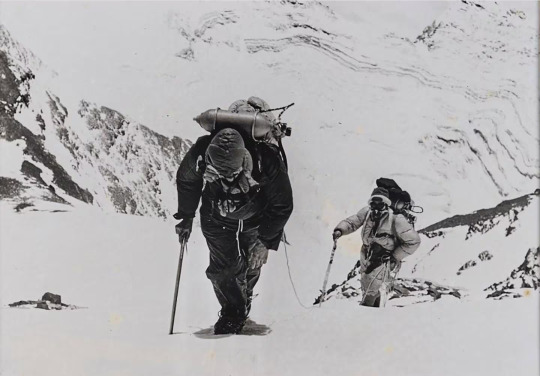
Why? Because it's there, of course. Why not?
And finally we get to the Metagamer. The gamer that plays away from the table as much as at it. The player who has a mounting pile of backup characters every single session. The player who loves to ask themselves "what if?"
This player loves all the rules, all the charts, and all the fluff. They resemble all three of the other players at points, but their focus is elsewhere. For them, the rules are a toybox full of interesting things to mash together. Character creation is less self-expression, more an experimental labrotory. Combat isn't a puzzle to solve, but a showcase to put the biggest, coolest thing in. A list of items isn't something to be discovered, but a catalogue of things to order.
The Metagamer cares less for the specific moment-to-moment gameplay or optimal solutions, but more for the thrill of making what could be the biggest or fastest or coolest things that could possibly be. So designing for enthusiastic Metagamers is less a choice of what systems are necessary, and more a practice at making sure that all systems are linked. Exploration can give things that are useful in Roleplay, and Roleplay effects Combat, and so on. A Metagamer will gleefully run away with the idea of fall damage being added to an attack, even if no fights ever happen at the bottom of cliff faces - merely because a 300-foot piledriver sounds awesome.

My next character is a cybernetic luchador bear that can deliver a flying lariat at mach two.
I would be remiss not to mention the Game Master as well - as the teacher, and most likely the purchaser of the RPG, they are the first player you must woo over to your system. But other than making sure the game is understandable and laid out in a way that is easy to reference, there's not really any focus to give to specific components - a GM may tend towards the "Gamer" or "Metagamer," but they are as likely to have traits from any of the player pillars. So to make that initial sale, the focus should be on clarity - "THIS GAME IS MADE FOR THIS PURPOSE." Once a GM knows what the game is about, they can then ask if it fits their style.

The magic that goes on behind these three panels...
Now, most players are a mix of these traits. Rarely does a Gamer not have an element of the Metagamer. Explorers can be as much a Roleplayer as a Gamer, and in certain scenarios players may be all four at once. But by choosing a pillar to focus on, or at least prioritise, we start to set our limits.
If a rule or system does not serve to cater towards our focus, and is not necessary for the game to function, it should not be given priority. Does a game for Roleplayers need a detailed list of poisons when a simple "poisoned" effect will convey the emergency? Does a system for Gamers need four pages of background lore? Do you really need that system for playing the stock market?
There is no perfect guideline for me to present here. But it is still good, every once in awhile, to hold your system at arm's length and say, "Who, really, is this game for? And does what I'm doing accomplish that?"
At the very least, it's helped me trim the fat a few times.
Happy creating, designers.
5 notes
·
View notes
Text
Jidan Electronic Co., Ltd.
Type: Bootleg Tamagotchi company, bootleg digital game company Founded: 2004 [source] Logo:

About: Jidan is well known for its truly strange infrared tamagotchi clones, such as Honey Lover (which is apparently two tamagotchis that graphically mate using infrared). They claim to be compatible with actual Tamagotchis.
Jidan also makes low-quality Gameboy Advance clones.
Notably, much of the packaging is in Spanish. Official Company Description:
Jidan Electronic Toys built in 2004, and the main products include all kind of handheld game like brick, virtual pet, infrared pet, and icon game etc. Except these popular game, we have a professional development team to develop and design new toy&game accroding to client requirements.
In 2005, we set up own wholesale store in GuangZhou to show our items and serve clients directly and conveniently.
As company setup, we have developed the closest relationship with several factories who in charge of the whole assembly process. They are the foundtion of production. Another partner is the software design team responsible for the application and R&D of electronic system. With their cooperation, we can create and produce all the items required.
We are a group conbiming the strength of market analysis, product design, programming, and manufacture. And we will offer the most various and competitive items to satisfy the market demand.
We design and produce all kind of handheld game, and electronic toys. With our own engineer team, we can have different solution for your unique market segment, change music, graphics, even the operation process would be our competitive strength.
Tama Bootlegs by Jidan:
(Eventually all of these will get their own posts)
Terradura Tama [Source] Description:
New member of infrared tamagotchi family, more advanced, convenient and interesting!
1. Advanced operation: Touch screen, operating with the stick. Lock model touch pen
2. Interactive game: Connecting with other infrared tamagotchi to exchange gifts, make friends, and even marry.
3. Vivid breeding process: Growth, marry requirement when getting mature and then give birth to a baby.
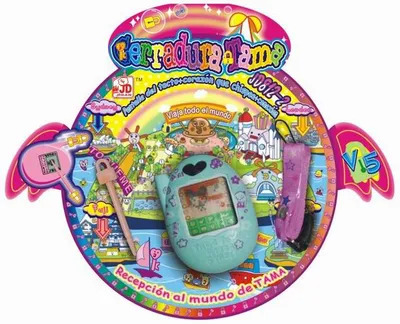
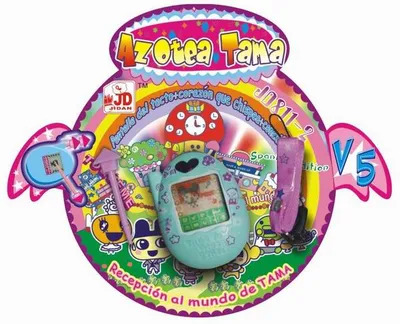
Tamagotcha Familitcha [Source] Description: New V5 version
Each time raises three tama characters
Chimney dasign
House shape color card
Accessory: Cute key
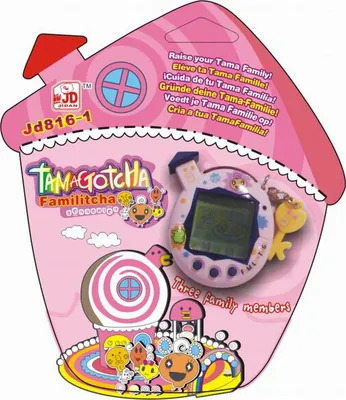
Conexión Animal [Source] Description:
Infrared star Tamagotchi, new member of infrared Tamagotchi family, more attractive.
1. New shape, adorable star for all dreaming liking children!
2. Interest: Has emotion, implys its master what to do and how to do; Lives as the similar way as human: Playing with and making friends with each other, choosing lovers when they grown up, and have their generation.
- New IC, new character installed.
- New LCD, more than 1000 dots, the characters and pictrues are more clearer and vivider.
- Gaining password after winning the game, inputting the password and get the secret gift.
3. Infrared connection with others to make friends and exchange gifs, enjoy the communication interest!
5. 1 Free laser pen, 3 AG13 battery and 4 changeable pen tips are enclosed.
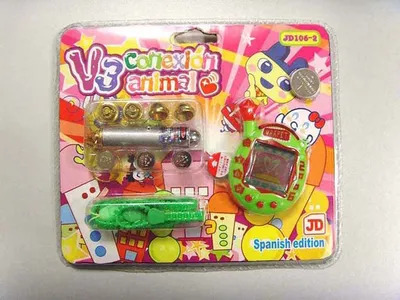
9 Llave Animal [Source] Description:
New member of infrared tamagotchi family, more advanced, convenient and interesting!
1. Adding six shortcut keys: Convenient operation and quickly go to the different option. The shortcut key is blinking once pressed. 2. Interactive game: Connecting with other infrared tamagotchi to exchange gifts, make friends, and even marry. 3. Vivid breeding process: Growth, marry requirement when getting mature and then give birth to a baby.
- New IC, new character installed. - New LCD, more than 1000 dots, the characters and pictrues are more clearer and vivider. - Gaining password after winning the game, inputting the password and get the secret gift.
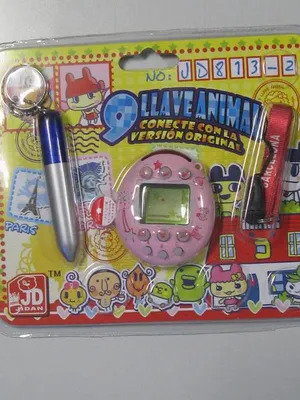
Infrared Tama Tamaschool [source] Description:
New member of infrared Tamagotchi family! More attractive, more smarter!
1. New shape, compack shape and touch screen operaton.
2. Class learning added, make the pet smarter and happier.
3. Interest: Has emotion, implys its master what to do and how to do; Lives as the similar way as human: Playing with and making friends with each other, choosing lovers when they grown up, and have their generation.
- New IC, new character installed. - New LCD, more than 1000 dots, the characters and pictrues are more clearer and vivider. - Gaining password after winning the game, inputting the password and get the secret gift.
4. Infrared connection with others to make friends and exchange gifs, enjoy the communication interest
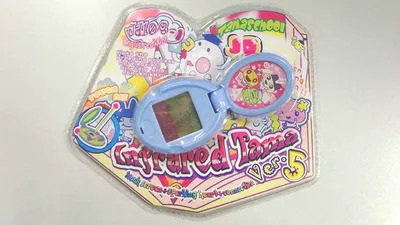
Honey Lover [source] Description:
*heart shape behind the screen to blink during connection. *connect to the bandai V1& V2 &V3 infrared tamagotchi.
----New IC, new character installed. ----New LCD,clearer and vivider. ----Gaining password after winning the game, inputting the password and get the secret gift.
* install 1 piece CR2032 battery in stead of 2 pcs AG13 batter, its exhausing time would last much longer. *lovely couple package to save some money for client. *zipper attached make it easier to hand on. *manual has been translated into eight language. *newest paper card design.
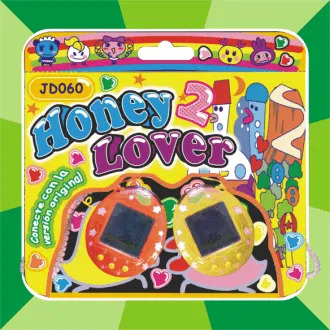
Animal Imaginado [source] Description: New member of infrared tamagotchi family, more advanced, convenient and interesting! 1. Interactive game: Connecting with other infrared tamagotchi to exchange gifts, make friends, and even marry. 2. Vivid breeding process: Growth, marry requirement when getting mature and then give birth to a baby. 3. New IC, new character installed. Gaining password after winning the game or sucessfully infrared connection with others, inputting the password and get the secret gift. 4. Blinking function - when infrared connect, the inlayed heart would blink. 5. Durable battery: 1 piece CR2032, supporting long process than AG13. 6. Various packing and manual: English, France, Spanish German Portuguese, Italian etc. These worthful gift includes: --calculator --watch --clock --pedometer --counter --game console --laser pen --tamagotchi holder --tamagotchi bag

Azotea Tama [1][2] Description:
1. Wireless connection to exchange gift, make friend, and game compete with others.
2. Touch screen operation and get rid of all rubber keys, more convenient.
3. New IC, new character installed.
4. New LCD, more than 1000 dots, the characters and pictures are clearer and vivider.
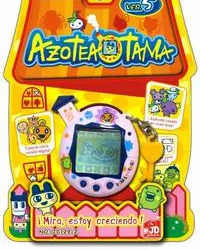

Ura-Pet [Source] Description:
Our company is specializing in handheld electronic game, including infrared tamagotchi, sudoku game and icon game. Additionally, OEM is available.
New member of infrared tamagotchi family, more advanced, convenient and interesting!
1. Star model with lovely color. 2. Interactive game: Connecting with other infrared tamagotchi to exchange gifts, make friends, and even marry. 3. Vivid breeding process: Growth, marry requirement when getting mature and then give birth to a baby.
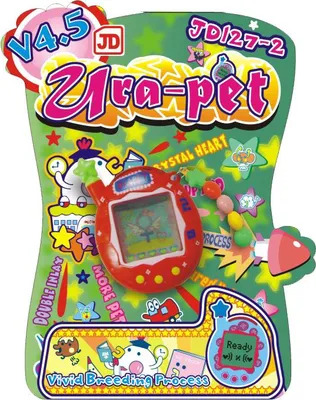
Mini Tamagotchi [Source] Description:
New member of infrared Tamagotchi family! More attractive, more smarter!
1. New shape, mini size
2. Non-infrared function
3. As an onament for key or mobile phone
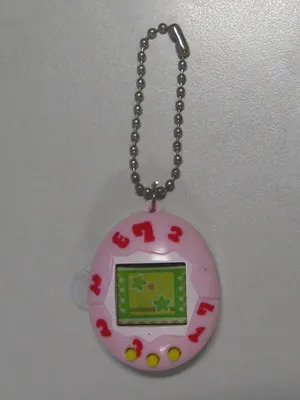
Keyring Tama [source] Description:
April new item, new design, more funny, we belong to the FAMI-TAMA!
1. The latest V5 familitchi version 2. Lock model with cute key 3. House shape color card
Raise generations of families with proper care and feeding, Communicate with friends using the newest infrared capabilities, Characters can visit friends, play games and give gifts, even marry to having baby, Requires 1 "CR203" battery (not included), Having eight countries language color cards to choose.
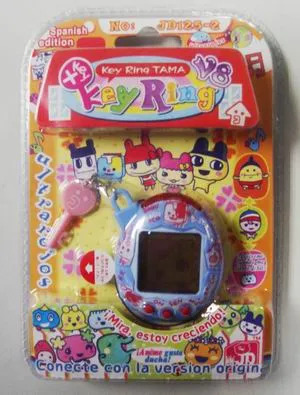
Non-Tama Virtual Pets by Jidan:
Tedy Virtual Pet [Source] Description: 1.interesting breeding process to feed him, bath him, and discipline him. 2.good attention will make him grow up well. 3.game practice could bring you much fun.
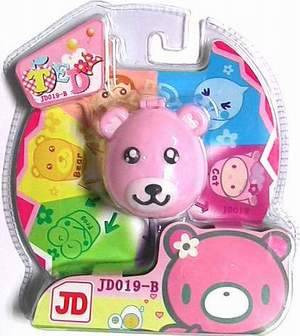
GBA Bootlegs/Other Bootlegs by Jidan:
MnEIO (Mario GBA bootleg) [Source] Description: --Mario should fight with the dragon who shot the fire ball. --Player should accumulate the score to enter the next level.
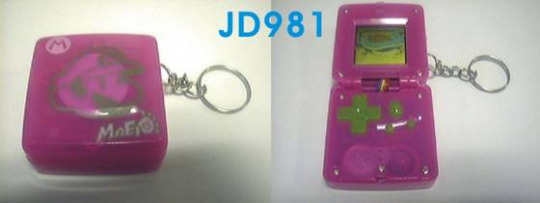
Keroro Game [Source] Description: Keroro and his company should practice their fighting skill.
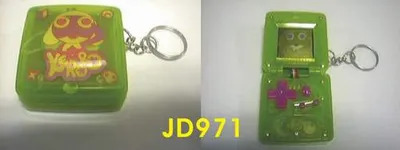
Keroro Fighting Game [Source] Description: Keroro and his company should practice their fighting skill. The stand at different side to strick back each other.
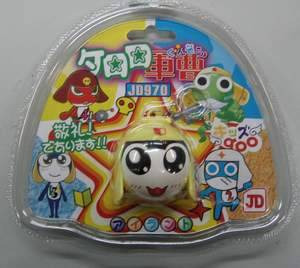
NaruIIto Fighting [Source] Description: 1.NaRudo and his companies will practice their fighting skill in this game. 2.Successful defense will earn one point for player. 3.Speed will increase and vary as score accumulated.
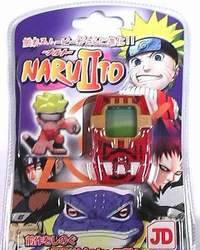
Dragonnumen [1][2] Description: -wireless connection to fight to enemy -pedometer to trace the process of adventure -crash card to vary the shape of digimon immediately

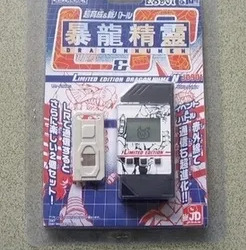
#bootleg#knockoffs#crappyoffbrands#fakies#bootleg tamagotchi#toy knockoffs#tamagotchi#chinagotchi#spamagotchi#Jidan#company#naruto#Mario#digimon#gba
6 notes
·
View notes
Text
The Future of Hair Care: Non-Invasive Solutions by Creation of Beauty

In the ever-evolving world of personal care and wellness, hair care has taken center stage. With increasing concerns about hair loss, damage, and scalp health, consumers are searching for solutions that are effective, safe, and non-invasive. Creation of Beauty, an innovative leader in the beauty industry, is reshaping the future of hair care by offering groundbreaking, non-invasive solutions that prioritize health and sustainability.
The Rise of Non-Invasive Hair Care
Traditionally, addressing hair loss or damage often involved invasive procedures or harsh chemical treatments. These methods, while sometimes effective, can lead to discomfort, long recovery times, and potential side effects. Consumers today are seeking alternatives that offer the same level of efficacy without compromising their overall health.
Non-invasive hair care solutions emphasize natural, gentle approaches that align with modern wellness trends. They include advanced technologies, clean beauty formulations, and holistic scalp care systems that work in harmony with the body’s natural processes.
Creation of Beauty’s Innovative Approach
Creation of Beauty has emerged as a trailblazer in this transformative movement. By leveraging cutting-edge research and state-of-the-art technology, the brand has developed a range of non-invasive hair care products and treatments designed to restore hair health, promote growth, and enhance scalp vitality.
Here’s how Creation of Beauty is shaping the future:
Advanced Scalp Care Systems Creation of Beauty focuses on scalp health as the foundation for strong, healthy hair. Their products use natural ingredients like botanical extracts, peptides, and essential vitamins to nourish the scalp, reduce inflammation, and promote optimal conditions for hair growth.
Low-Level Light Therapy (LLLT) As a pioneer in integrating technology into hair care, Creation of Beauty incorporates low-level light therapy into their solutions. This non-invasive method stimulates hair follicles, improves blood circulation, and encourages hair growth—all without the need for surgical intervention.
Clean and Sustainable Formulations With increasing consumer demand for eco-friendly products, Creation of Beauty ensures their formulations are free from sulfates, parabens, and harmful chemicals. Their commitment to sustainability extends to packaging, with recyclable materials and reduced waste initiatives.
Personalized Hair Care Regimens Recognizing that every individual’s hair care needs are unique, Creation of Beauty offers personalized solutions. By analyzing hair type, scalp condition, and lifestyle factors, they create tailored regimens that deliver optimal results.
The Benefits of Non-Invasive Hair Care
The shift towards non-invasive hair care brings numerous benefits:
Safety: Gentle, natural methods reduce the risk of adverse side effects.
Convenience: Non-invasive treatments can often be done at home or in short sessions, fitting seamlessly into busy lifestyles.
Sustainability: Eco-conscious formulations and practices ensure minimal impact on the environment.
Long-Term Results: By addressing the root causes of hair issues, these solutions offer lasting improvements.
Looking Ahead
As consumer awareness of non-invasive solutions grows, brands like Creation of Beauty are poised to lead the hair care revolution. Their dedication to innovation, sustainability, and personalization sets a new standard for the industry.
The future of hair care is here, and it’s non-invasive, effective, and empowering. With Creation of Beauty’s pioneering solutions, individuals can achieve healthy, beautiful hair while embracing a lifestyle rooted in wellness and sustainability.
Creation of Beauty continues to inspire confidence and redefine hair care with its innovative approach. Stay tuned for their latest advancements as they lead the way toward a healthier, more beautiful tomorrow.
2 notes
·
View notes
Text

Perfume Manufacturers and Suppliers - Kanta Essential Oils
Kanta Essential Oils is a trusted leader among perfume manufacturers and suppliers, delivering high-quality fragrances designed to meet diverse business needs. With a focus on excellence, sustainability, and customer satisfaction, we offer tailored solutions for individuals and businesses worldwide.
Who We Are
At Kanta Essential Oils, we specialize in crafting premium perfumes using the finest ingredients. Our expertise lies in combining traditional craftsmanship with modern techniques to create fragrances that captivate and inspire. Whether you’re starting a new perfume line or seeking reliable suppliers for your business, we are here to help you succeed.
Why Choose Kanta Essential Oils?
Here’s why Kanta Essential Oils is the top choice for perfume manufacturers and suppliers:
Uncompromising Quality We use premium-grade raw materials and follow stringent quality standards to ensure every product meets customer expectations.
Custom Solutions From signature fragrances to private labeling, we provide personalized options to help you stand out in the market.
Sustainability We are committed to eco-friendly practices, ensuring our production processes and packaging are environmentally responsible.
Expertise You Can Trust With years of experience in the fragrance industry, our team brings unmatched knowledge and creativity to every project.
Our Products and Services
As one of the leading perfume manufacturers and suppliers, we offer a wide range of products and services:
1. Designer-Inspired Perfumes
Enjoy high-quality fragrances that rival top designer brands at competitive prices.
2. Natural Perfumes
Experience the purity of nature with our natural perfumes made from essential oils and botanical extracts.
3. Custom Fragrances
Create your unique scent with our custom fragrance solutions tailored to your preferences and brand identity.
4. Bulk Supplies
Perfect for wholesalers and retailers, our bulk perfume supplies ensure consistent quality and reliable delivery.
5. Private Labeling
Start your perfume line with our private labeling services, complete with customizable packaging and branding.
Industries We Serve
Kanta Essential Oils caters to a wide range of industries, including:
Retail: Supplying perfumes to boutique stores and retail chains.
Cosmetics: Providing fragrances for skincare and beauty products.
Hospitality: Creating signature scents for hotels, spas, and resorts.
Corporate: Offering customized corporate gifting options.
Our Manufacturing Process
We follow a meticulous process to ensure perfection in every product:
Ingredient Selection We source the finest natural and synthetic materials from trusted suppliers worldwide.
Blending and Formulation Our expert perfumers create harmonious blends, ensuring long-lasting and captivating fragrances.
Quality Assurance Every batch undergoes rigorous testing to guarantee safety, consistency, and excellence.
Packaging We provide elegant and customizable packaging solutions to enhance your brand’s appeal.
Why Reliable Perfume Manufacturers and Suppliers Matter
Choosing the right perfume manufacturers and suppliers is essential for businesses aiming to deliver high-quality products to their customers. At Kanta Essential Oils, we prioritize your success by offering innovative solutions, competitive pricing, and outstanding support. From concept to delivery, we handle every detail with precision and care.
Testimonials
Here’s what our clients say about working with Kanta Essential Oils:
Emily R., Boutique Owner: “Kanta Essential Oils helped me launch my perfume line. The quality and service were exceptional!”
James T., Distributor: “Their bulk supply options and reliable delivery have been a game-changer for my business.”
How to Work with Us
Getting started with Kanta Essential Oils is simple:
Contact Us: Email us at [email protected] or visit kantaessentialoils.com.
Share Your Needs: Tell us your requirements, whether it’s a custom fragrance, bulk order, or private labeling.
Receive a Quote: We’ll provide a competitive quote tailored to your needs.
Approve and Produce: Once approved, we’ll begin production and keep you informed every step of the way.
Delivery: Enjoy timely delivery of your products, ready to impress your customers.
Connect with Us
As your trusted perfume manufacturers and suppliers, Kanta Essential Oils is dedicated to helping you succeed. With our expertise, sustainability efforts, and premium products, we are your partner for all fragrance needs.
Ready to elevate your business with premium perfumes? Contact us today at [email protected] or visit https://www.kantaessentialoils.com/ to learn more!
#best perfume supplier#premium perfume exporter#fragrance#essential oil supplier#essential oil exporter#essential oils#carrier oil#carrier oil supplier#carrieroilsupplier#perfume exporter
2 notes
·
View notes
Text
Top Blister and Packaging Tray Manufacturer in India
If you’re looking for reliable and high-quality packaging solutions in India, Uno Plast is the name you can trust. We specialize in creating blister packaging trays and custom plastic trays that cater to a wide range of industries. With years of experience, modern technology, and a commitment to customer satisfaction, we provide packaging options that are not just functional but also visually appealing. Whether you need standard designs or customized trays, we ensure that every product meets your unique needs.

Blister Packaging: Protect and Display with Confidence
Blister packaging is one of the most effective ways to protect and showcase products. At Uno Plast, we use top-grade materials like HIPS, PET, and PVC to create packaging that’s durable and reliable. Our blister packs are widely used across industries such as pharmaceuticals, electronics, cosmetics, and food.
Here’s what makes our blister packaging a great choice:
Keeps Products Safe: It protects items from dust, moisture, and damage, keeping them in perfect condition.
Custom Fit: We create blister packs in various shapes, sizes, and colors to fit your product perfectly.
Eco-Friendly Options: Materials like PET and PVC are recyclable, ensuring we do our part for the environment.
Our popular blister packaging options include:
Clamshell Blisters: Ideal for tamper-proof packaging.
Slide Blisters: Great for small items like cosmetics or tools.
Two-Part Blisters: Easy to assemble and securely seal products.
Plastic Trays: Versatile and Durable Packaging
Our plastic trays are designed to be practical, durable, and visually appealing. Whether you’re packaging chocolates, sweets, or industrial parts, Uno Plast’s trays deliver on both quality and functionality.
We use food-grade materials to ensure safety for edible products while maintaining high standards for all types of trays. Here’s why our plastic trays stand out:
Custom Designs: We create trays that match the exact dimensions of your products.
Enhances Presentation: Sleek and clean designs improve the overall look of your packaging.
Built to Last: Made with high-quality materials, our trays are durable and reliable.
Our plastic tray options include:
Food Packaging Trays: Perfect for sweets, chocolates, and baked goods.
Industrial Packaging Trays: Designed to protect and organize machine parts.
Gift Packaging Trays: Customizable designs to make festive occasions special.
Why Choose Uno Plast?
Uno Plast isn’t just a packaging manufacturer—we’re your partner in delivering high-quality solutions. Here’s what makes us the best choice:
Premium Materials: We use top-grade materials, ensuring safety and durability for every product.
Advanced Technology: Our state-of-the-art equipment ensures precision and consistency.
Tailored Solutions: We customize every detail to meet your specific needs, from color to size.
Affordable Prices: High-quality packaging doesn’t have to break the bank. We offer competitive pricing without compromising quality.
On-Time Delivery: We value your time and ensure prompt delivery for every order.
Sustainable Practices: Our use of recyclable materials reflects our commitment to the environment.
Industries We Serve
Our blister packaging and plastic trays are trusted by various industries:
Pharmaceuticals: Secure blister packaging for tablets and capsules.
Food and Confectionery: Elegant trays for chocolates, sweets, and bakery items.
Electronics: Durable trays for small components.
Cosmetics: Attractive blister packs for beauty and skincare products.
Automotive: Sturdy trays for machine parts and accessories.
Quality You Can Rely On
At Uno Plast, quality is not just a priority—it’s our promise. Every product goes through rigorous quality checks to ensure it meets the highest standards. From the initial design to the final product, we pay attention to every detail to ensure you receive packaging that exceeds your expectations.
Whether you need a small batch of custom trays or large-scale production, our team works closely with you to deliver exactly what you need.
How to Get Started
Finding the perfect packaging solution for your products is simple with Uno Plast. Visit our website to explore our complete range of blister packaging and plastic trays:
Blister Packaging
Plastic Trays
If you have specific requirements, feel free to contact us. Our team is always ready to assist you.
Conclusion
Uno Plast has earned its reputation as one of the leading manufacturers of blister packaging and plastic trays in India. Our commitment to quality, innovation, and customer satisfaction sets us apart.
Whether you’re packaging food, electronics, or industrial parts, our products ensure protection and elevate presentation. Trust Uno Plast to deliver packaging solutions that not only meet but exceed your expectations. Let’s create something great together!
2 notes
·
View notes
Text
"How to Build a Million-Dollar Business: Lessons from Successful Entrepreneurs"
Building a million-dollar business is an ambitious yet achievable goal, requiring a combination of strategic planning, execution, resilience, and adaptability. Below, I’ll outline a comprehensive guide that can help you turn your entrepreneurial vision into a reality.

How to develop a successful business plan for a million-dollar company"
Market Research:
Pain Points: What problems do human beings face in their each day lives, paintings, or pursuits?
Gaps inside the Market: Are there any unmet dreams or underserved niches?
Competitor Analysis: Who are your primary competition? What are their strengths and weaknesses? What are they NOT doing?
Value Proposition:
Unique Selling Proposition (USP): What makes your solution stand proud of the opposition? What is your "aspect"?
Customer Value: How does your product/service resolve a problem on your target audience? How does it improve their lives?
2. Validate Your Idea
Minimum Viable Product (MVP): Create a easy version of your product/issuer to check your assumptions. This may be a touchdown page, a prototype, or a limited initial imparting.
Early Adopters: Seek out early adopters who're inclined to attempt your product/service and offer comments.
Data Collection: Track key metrics, along with website site visitors, purchaser acquisition value (CAC), and consumer lifetime fee (CLTV).
Customer Feedback: Actively solicit and pay attention to patron comments. What do they like? What may be improved?
three. Build a Strong Foundation
Team Building: Assemble a talented and influenced group with complementary competencies.
Legal and Financial Structure: Choose the proper criminal form on your commercial business enterprise (e.G., sole proprietorship, LLC, business employer) and establish a sturdy economic foundation.
Operations: Develop green and scalable operations to deliver your product/issuer continuously and reliably.
4. Marketing and Sales Strategy
Target Audience: Define your ideal purchaser profile (ICP) in detail: demographics, hobbies, behaviors, ache factors.
Marketing Channels:
Content Marketing: Create treasured and tasty content cloth (weblog posts, articles, videos, social media) to attract and educate your target marketplace.
Search Engine Optimization (search engine optimization): Optimize your internet site and content to rank better in seek engine results.
Social Media Marketing: Leverage social media structures to construct brand recognition, interact with customers, and run focused advertisements.
Paid Advertising: Explore paid advertising alternatives together with Google Ads, social media commercials, and influencer advertising.
Sales Process:
Develop a clean and repeatable income manner.
Build sturdy purchaser relationships.
Provide remarkable customer support.
Five. Scale and Grow
Customer Acquisition: Continuously refine your customer acquisition strategies to build up new customers value-successfully.
Customer Retention: Focus on retaining present clients through loyalty packages, personalised stories, and terrific customer service.
Product Development: Continuously innovate and beautify your product/provider primarily based on purchaser remarks and marketplace tendencies.
Funding: Explore investment options at the side of project capital, angel customers, and bootstrapping.
6. Key Strategies for Million-Dollar Success
Focus on Customer Value: Prioritize customer satisfaction and assemble lengthy-term relationships.
Build a Strong Brand: Create a sturdy and recognizable emblem that resonates together together with your goal marketplace.
Embrace Technology: Leverage technology to automate strategies, enhance performance, and advantage a aggressive advantage.
Build a High-Performing Team: Invest in your organization and create a high satisfactory and motivating art work surroundings.
Adapt and Iterate: Be willing to conform to converting marketplace conditions and iterate in your enterprise model based totally on remarks and information.
7. Common Pitfalls to Avoid
Lack of Market Research: Jumping into a market with out thorough studies can result in high-priced mistakes.
Poor Execution: A terrific idea is best as appropriate as its execution.
Ignoring Customer Feedback: Failing to concentrate to consumer feedback can cause product/provider dissatisfaction and churn.
Cash Flow Problems: Inadequate cash glide manipulate can fast cripple a enterprise.
Overspending: Avoid vain costs and prioritize profitability.
Eight. Mindset and Persistence
Growth Mindset: Cultivate a boom mindset that embraces stressful conditions and sees setbacks as mastering possibilities.
Persistence: Building a successful business takes effort and time. Don't surrender on your vision, even if confronted with obstacles.
Passion: Passion is essential for riding long-term success. Choose a industrial enterprise which you are absolutely captivated with.
Continuous Learning: Stay informed approximately industry traits, exceptional practices, and new technology.
Nine. Examples of Million-Dollar Businesses
E-trade: Online shops like Amazon, Shopify, and Etsy.
Software as a Service (SaaS): Companies like Salesforce, Slack, and Zoom.
Subscription Boxes: Companies like Blue Apron, Dollar Shave Club, and Stitch Fix.
Digital Marketing Agencies: Agencies that offer services along with seo, social media advertising and advertising and marketing, and content material material marketing.
Online Education Platforms: Platforms like Coursera, Udemy, and Skillshare.
2 notes
·
View notes
Text
Enhancing Beverage Packaging with Holographic Films in Albania

In Albania's competitive beverage market, making your product stand out is key to success. An innovative way to achieve this is by using holographic films in packaging. These films not only make products visually appealing but also provide numerous practical benefits. Here's how customized holographic films in Albania are transforming beverage packaging in Albania: - Visually Striking Aesthetics Metalized Holographic films in Albania add a shimmering, multi-dimensional effect to beverage packaging, making products eye-catching. The vibrant colors and dynamic patterns of these films grab consumers' attention, helping beverages stand out on the shelves and leading to increased interest and sales. - Brand Differentiation With many similar products on the market, brand differentiation is crucial. Holographic films Supplier in Albania offer a unique and memorable packaging solution that sets brands apart from competitors. By using these films, beverage companies in Albania can create a distinct brand identity that appeals to consumers and builds loyalty. - Elevated Product Perception Consumers often associate holographic packaging films manufacturer in Albania with high quality and innovation. The luxurious appearance of lamination holographic films in Albania can enhance the perceived value of a beverage, making it more appealing to discerning customers. This can be particularly beneficial for premium and specialty beverages. - Anti-Counterfeiting Measures Seamless holographic films have built-in security features that make it difficult for counterfeiters to replicate packaging. The intricate designs and light-reflective properties of these films act as a deterrent against tampering and counterfeiting, protecting brands and ensuring consumers receive genuine products. - Sustainable Options Sustainability is a growing concern for modern consumers. Many polyester holographic films in Albania used in beverage packaging are designed to be environmentally friendly. Brands in Albania can choose films made from recyclable materials or those that incorporate eco-friendly practices in their production, aligning with consumer demand for sustainable packaging solutions. - Versatile Design Applications Colour Holographic films in Albania can be applied to various types of beverage packaging, including bottles, cans, labels, and shrink sleeves. This versatility allows brands to experiment with different design elements and create cohesive, visually appealing packaging that enhances the overall brand experience. Conclusion Rainbow Holographic films are revolutionizing beverage packaging in Albania by offering a blend of visual appeal, brand differentiation, and security features. These films not only make products stand out on the shelves but also enhance consumer perception of quality and innovation. As the demand for eye-catching and sustainable packaging solutions continues to grow, holographic films provide a powerful tool for beverage brands in Albania to capture consumer attention and build lasting brand loyalty. Read the full article
2 notes
·
View notes
Text
Tips For Choosing The Right Cigarette Equipment Supplier
When it comes to cigarette manufacturing, choosing the right supplier for your equipment is crucial. The efficiency, reliability, and quality of your production, including processes involving cigarette wrapping machines, depend significantly on this decision. With numerous suppliers in the market, finding one that aligns with your needs can be overwhelming. This guide highlights key considerations to help you make an informed choice, ensuring that the supplier you select enhances your production capabilities and supports your business growth effectively.
1. Assess Your Business Needs
Before reaching out to suppliers, start by identifying your specific requirements. Do you need high-capacity machinery for large-scale production or smaller, versatile equipment for custom products? Consider the type of cigarettes you’ll produce, the speed you require, and any unique features like eco-friendly operations. Knowing your needs will narrow down your options and ensure you’re not paying for unnecessary capabilities.
2. Research Supplier Reputation
A supplier’s reputation reflects their reliability and product quality, especially for cigarette machinery spare parts. Seek reviews, testimonials, and case studies from similar businesses. Ensure they have experience in your industry. A well-established supplier with a proven track record is a safer and more dependable choice for long-term success.
3. Evaluate The Technology Offered
The cigarette manufacturing industry is evolving, with automation and digital technologies playing an increasingly significant role. Ensure the supplier offers modern, efficient, and technologically advanced equipment. Features like automated quality control, easy integration with existing systems, and user-friendly interfaces can boost productivity and reduce operational challenges.
4. Focus On After-Sales Support
Even the best machinery, like an automatic cigarette rolling machine, can face issues, making after-sales support essential. Opt for a supplier offering excellent customer service, quick response times, spare parts availability, and maintenance support. Also, inquire about warranties and staff training to ensure smooth operation and long-term equipment efficiency.
5. Consider Cost And Value
Although cost is a key factor, it should not be the sole consideration in your decision-making process. Analyze the long-term value of the equipment, including its durability, efficiency, and energy consumption. Sometimes, investing in slightly more expensive machinery can save you money in the long run through reduced downtime and maintenance costs.
6. Compliance With Industry Standards
Make sure the equipment adheres to industry regulations and meets all required safety standards. reliable supplier will have certifications to back up the quality and safety of their products. This ensures smoother operations and avoids potential legal or regulatory issues.
7. Seek Customization Options
Your business might have unique needs that off-the-shelf equipment cannot fulfill. Opt for a supplier who offers customization options, allowing you to tailor the machinery to your specifications.
Conclusion
Choosing the best supplier for cigarette manufacturing equipment involves assessing your needs, technology, and after-sales support. Today, companies like Budhan offer diverse equipment, including automatic cigarette-making machines and automatic box-packing machines, catering to modern manufacturing trends. Such suppliers provide comprehensive solutions that ensure efficient production and seamless packaging, making them valuable partners for business growth. Carefully evaluating such offerings helps establish a successful, long-term partnership with the right supplier.
2 notes
·
View notes
Text
If it’s good for athletes, it’s good for you
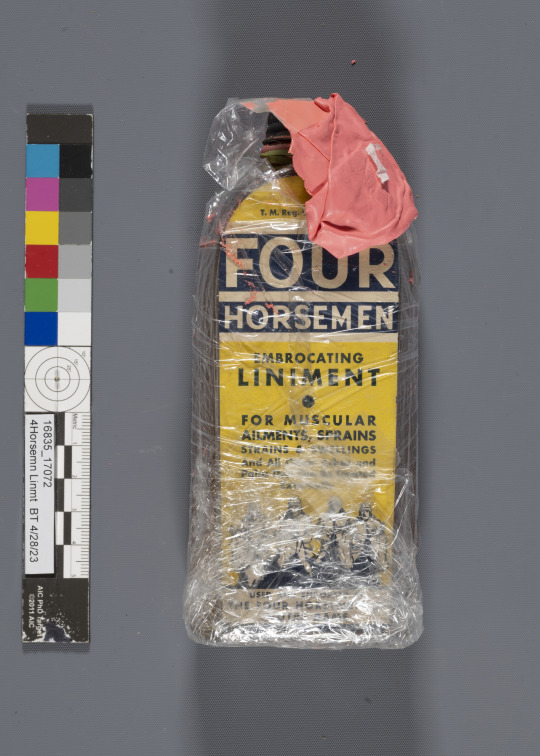
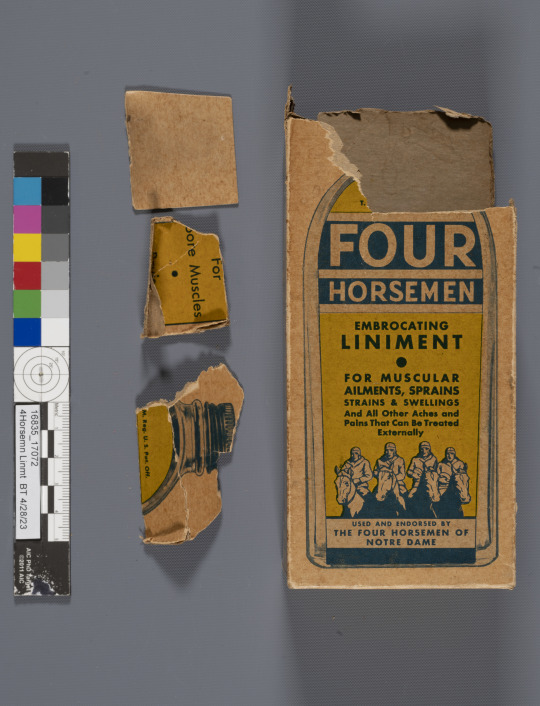
Football is big here at Notre Dame, and we’ve got the archival collections to show for it. Seen here is the Four Horsemen Liniment, a well-branded solution for all muscular ailments, and many other practical uses. Produced in the 1930’s, this bottle maintains its original packaging, as well as some of the liniment itself, posing a unique storage dilemma. The liniment was well preserved in part by a pink rubber balloon wrapped tightly around the bottle cap to prevent leaks (***not a preservation approved strategy***). Treatment involved removal of the balloon using solvents, transporting the liquid contents into a more appropriate lab grade storage container, cleaning residual liniment from the bottle, and constructing a better housing to protect and showcase these unique materials. Kozo paper and wheat starch paste were used to mend the fragmented box, while the accompanying pamphlet which had been stored wrapped tightly around the bottle, was humidified and flattened to reduce its curl. We can’t make any claims to this product’s effectiveness, but as a collection item we think it’s pretty cool.


21 notes
·
View notes
Text
@vividraw_official Ampoule Review
VIVIDRAW NIACIN ONION CLEAR AMPOULE


The Vividraw Niacin Onion Clear Ampoule is a potent skincare product designed to brighten and clarify the skin. Infused with niacinamide and onion extract, it effectively reduces dark spots and uneven skin tone while providing a soothing effect. The lightweight, non-greasy formula absorbs quickly, making it suitable for all skin types. Regular use promotes a radiant, healthier complexion without irritation. Its minimalist packaging and cruelty-free formulation add to its appeal for conscious consumers.
VIVIDRAW APPLE VINEGAR FOR SHRINKEE AMPOULE


The Vividraw Apple Vinegar for Shrinkee Ampoule is a refreshing solution for tightening pores and balancing oily skin. Enriched with apple vinegar, it gently exfoliates and refines skin texture, leaving it smooth and polished. The lightweight formula absorbs quickly without a sticky residue, making it ideal for daily use. It helps control excess sebum while maintaining the skin’s natural moisture barrier. This ampoule is a great choice for those seeking a clearer, more refined complexion with minimal effort.
VIVDRAW BAOBAB HYDROGEL TO DROP AMPOULE


The Vividraw Baobab Hydrogel to Drop Ampoule is a deeply hydrating formula designed to replenish and lock in moisture. Infused with baobab extract, it provides long-lasting hydration while enhancing skin elasticity. The unique hydrogel-to-liquid texture feels refreshing on the skin and absorbs effortlessly without leaving any residue. Ideal for dry or dehydrated skin, it promotes a plump, dewy complexion with regular use. Its clean formulation and calming properties make it a soothing addition to any skincare routine.
#vividraw #superfoodskinmagic #koreanskincare #skincareroutine #skincarecommunity #skincarereview #skincareproducts #koreanskincareproducts #kbeautyproducts #kbeauty #skincare #contentcreator #ugc #ugccreator #ugcCommunity
#black male#review#beardie#dark skin#skincare#freebies#male grooming#skincare tips#men skin care#skincare products#skincare review
2 notes
·
View notes